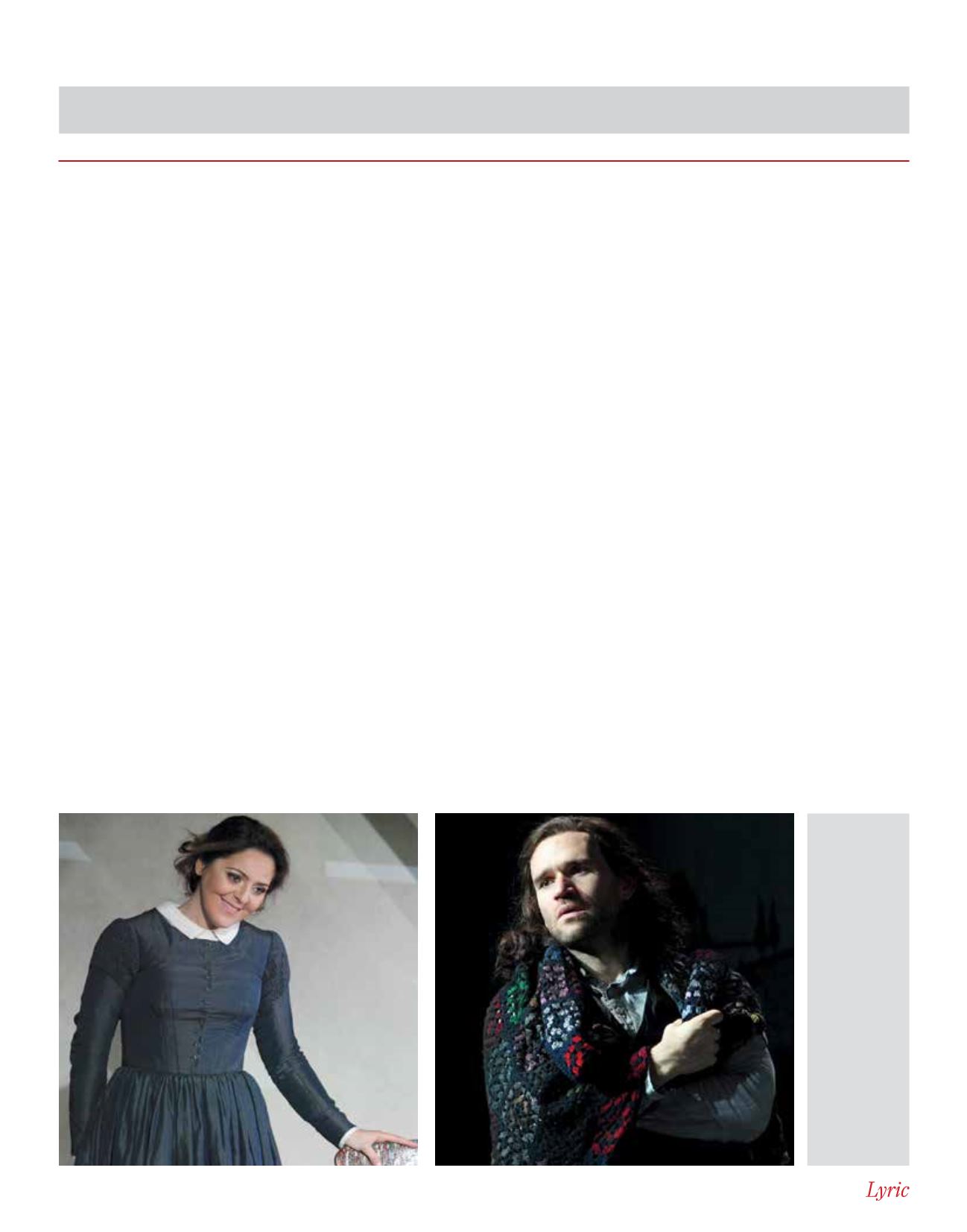
L Y R I C O P E R A O F C H I C A G O
34
|
October 6 - 20, 2018
When did you hear the piece for the first time?
I heard in my childhood the famous arias from
Mimì and Rodolfo, but I heard the complete
opera when I was 16 years old, and I played
a complete run of
La bohème
in Venezuela
with the Venezuelan Symphony Orchestra as a
substitute violinist.
What was your gut response to the piece at
the time?
I was in love with every bar! I also had
tremendous curiosity about what was
happening onstage, and was lucky to have a seat
where I could see everything. That curiosity had
a lot to do with why I became a conductor.
What do you think are the basic reasons that
account for this piece’s popularity?
Great music, great libretto, and perfect
structure. It attaches itself immediately to
the musical memory of everyone who hears
it. Its melodies stay in your mind, thanks to
simplicity, emotion, and its contrasts. Puccini
very often repeats the same themes, so they can
serve as reminders of certain ideas – friendship,
love, the Bohemian life, fatality. They come in
different tempos, in different harmonies and
colors and context. Think of the first meeting
of Mimì and Rodolfo: it’s so special because
it totally contrasts with what was happening
before with the four Bohemians. Suddenly it’s
pianissimo
, with string texture, muted and rich
harmonies; this sudden change of ambiance
touches the emotions of the listeners, singers,
orchestra, and stage director.
La bohème
is full
of moments like this one.
Do you have a favorite section of
La bohème
?
Act Three, which is absolutely the turning
point. It’s where the big drama starts, and it
makes sense of the first two acts.
How do you view the structure of the opera?
It’s like a symphony. The first act is the first
movement, the
allegro
. The second act is the
scherzo
, and it’s tough to coordinate everything
there, especially at the end with the
banda
[stage band]. The third act is the
adagio
, where
it’s often hard to keep the tension up, to keep
the musical phrases flowing, and to avoid
falling into the trap of sentimentalism. The
fourth act would be the last movement, with
musical recollections of what happened in the
first, second, and third movements within,
of course, a different context and the tragic
ending. It is a perfectly proportioned opera,
like a few others in the repertoire that are also
masterpieces, like
The Marriage of Figaro
or
La traviata
, just to mention a few.
The piece’s challenges include dealing with the
conversational passages, which are so abundant.
It is all about bringing out the contrasts of the
music and the text. At the beginning of the
opera, for example, you sense immediately that
Marcello is a completely different character
from Rodolfo. In those first lines for Marcello,
he sings often on the same note, almost spoken
singing, but then comes Rodolfo, with more
melodic lines and excitement in the voice
with lines moving up and down. Think also
of Mimì, who has two different sides to her
vocal character. She sings simply, almost
monotonously, when she’s talking about herself
and her everyday life. But when she talks
about her
feelings
, her inner world, her vocal
lines expand to an incredibly impassioned, full
sound. When I’m working with the singers
and the orchestra, I am always very keen on
keeping these contrasts present. They are
essential to give sense to the text and tell the
story in the most transparent and touching way
for the audience.
What’s the secret of doing justice to the big
soaring moments that everyone waits for in
this opera?
The success of the big moments in this opera
requires a perfect relationship between the
score and the freedom to interpret, with
perfect construction of the
crescendi,
dynamics,
emotionally, vocally and orchestrally. Puccini
was a composer who liked to write in great
detail. The word “freedom” is relative, because
it should be a sensation within a rigorous
respect for the score.
What makes Puccini such a terrific orchestrator?
The richness of the musical colors! He has
the “
italianitá
” in the sound with moments
of impressionism as well. Some of his pieces
recall Debussy in certain moments. The way
he uses the percussion, the way he mixes
woodwinds, his massive brass sections, and the
delicate strings. The second act of
Bohème
is a
masterpiece of orchestration, with the sparkling
character of the percussion, the children's
choir, the brilliant trumpets, and how he builds
this big, massive scene.
A TALK WITH THE CONDUCTOR
Venezuelan-Swiss conductor Domingo Hindoyan, who debuts at Lyric leading
La bohème,
spoke in August with Roger Pines, Lyric’s dramaturg.
CATHERINE ASHMORE/ROYAL OPERA HOUSE COVENT GARDEN.
CATHERINE ASHMORE/ROYAL OPERA HOUSE COVENT GARDEN.
Lyric’s Mimì
and Rodolfo,
Italian soprano
Maria Agresta
and American
tenor Michael
Fabiano, in
Richard Jones’s
production
at the Royal
Opera House
Covent
Garden.








